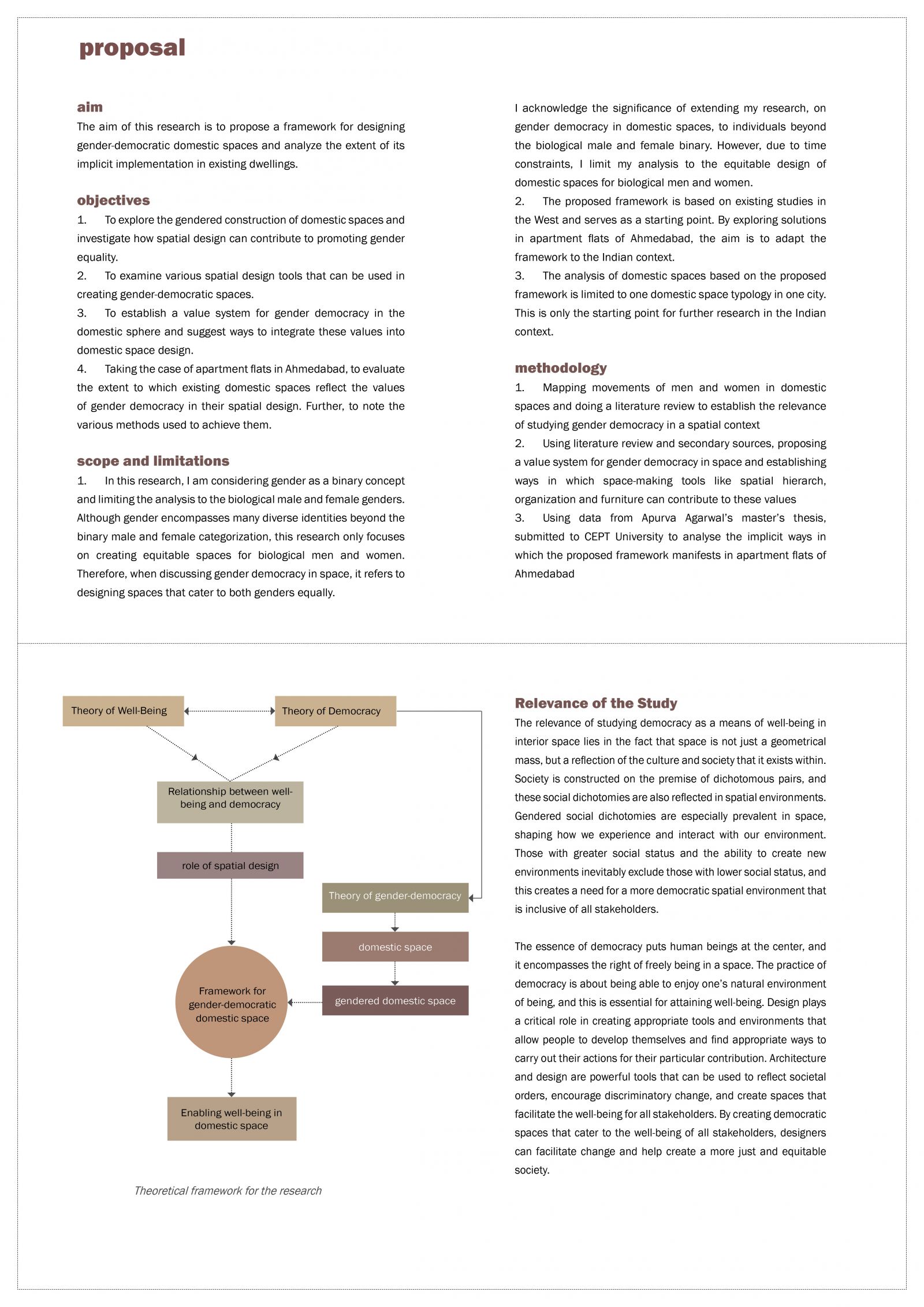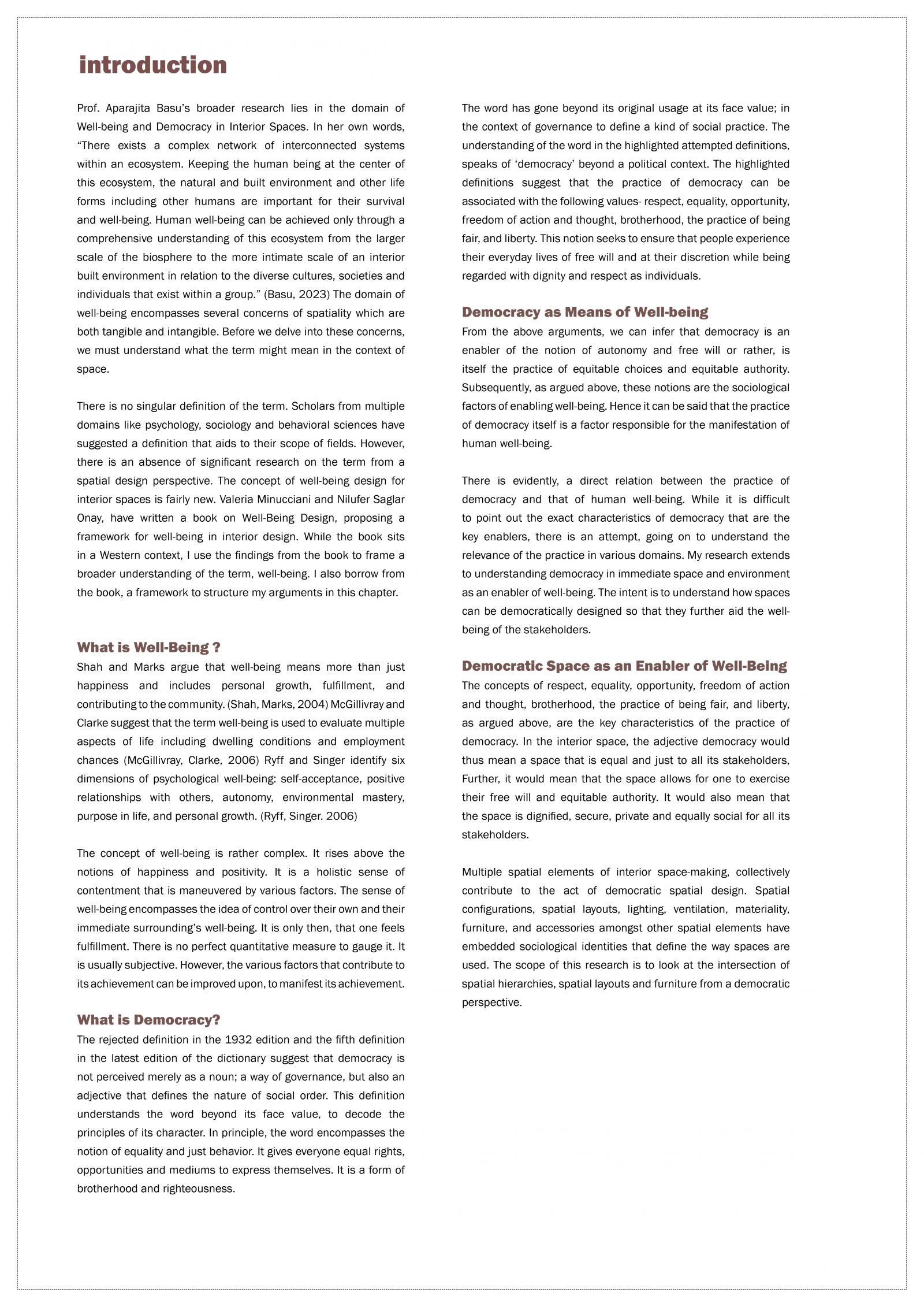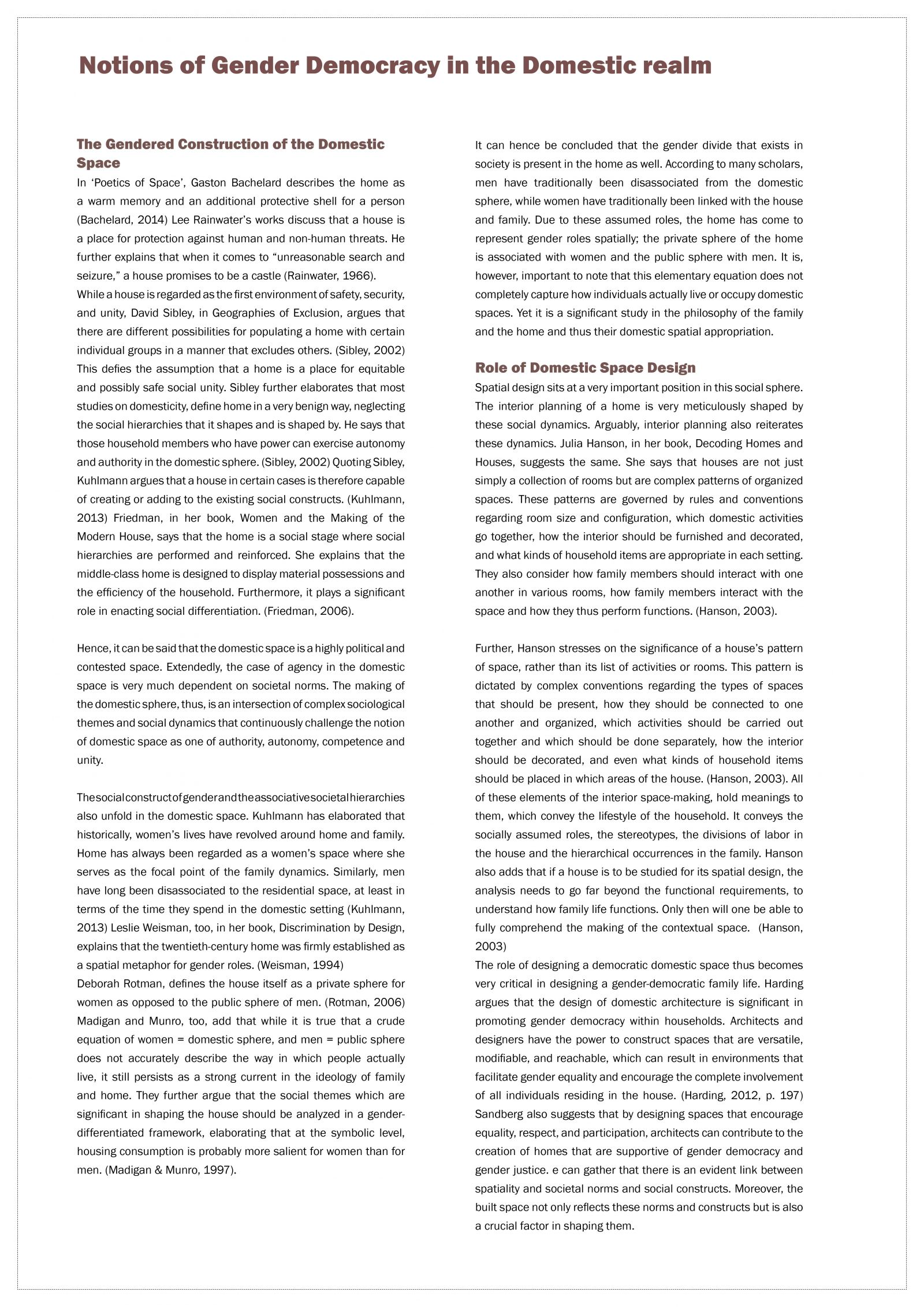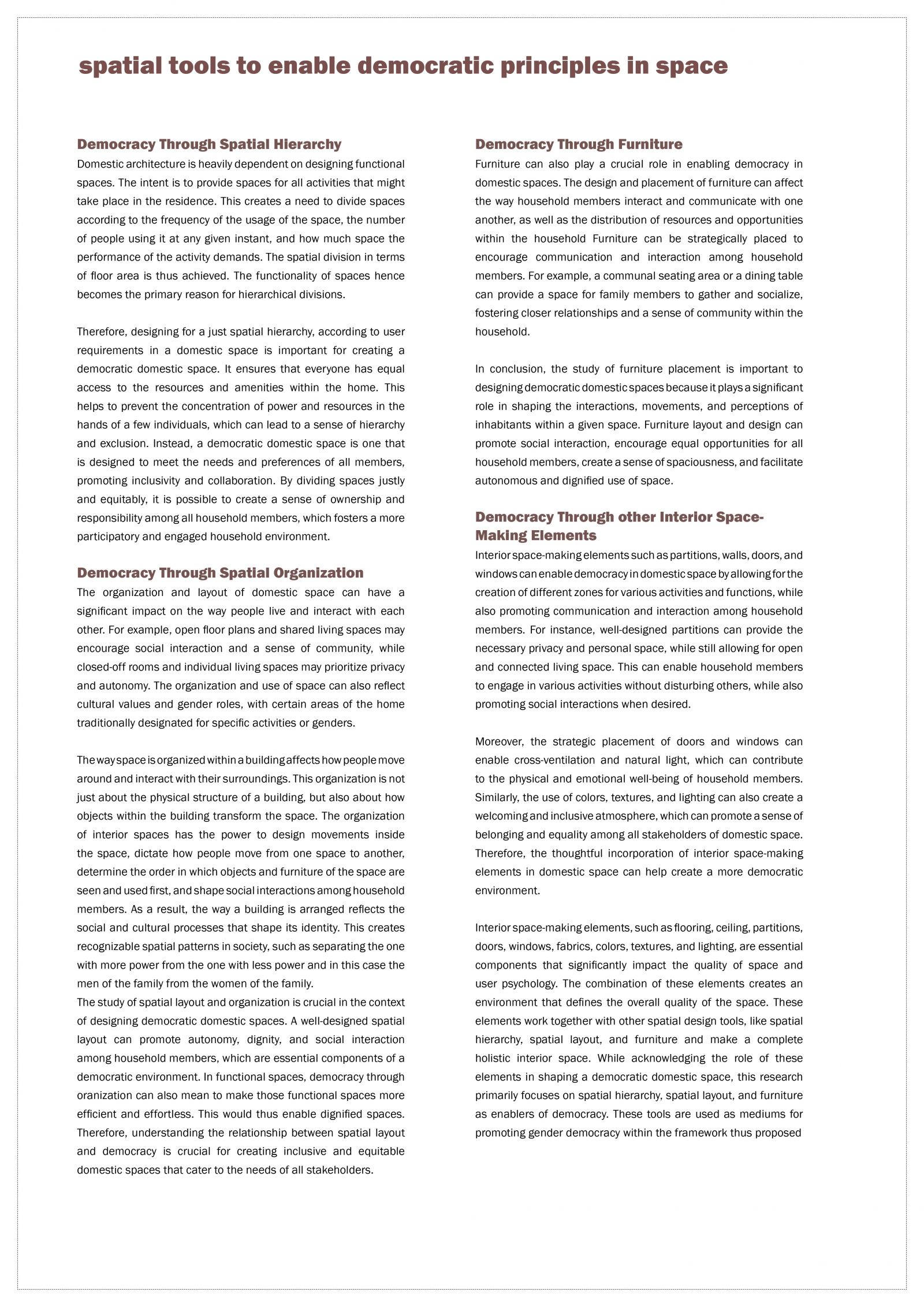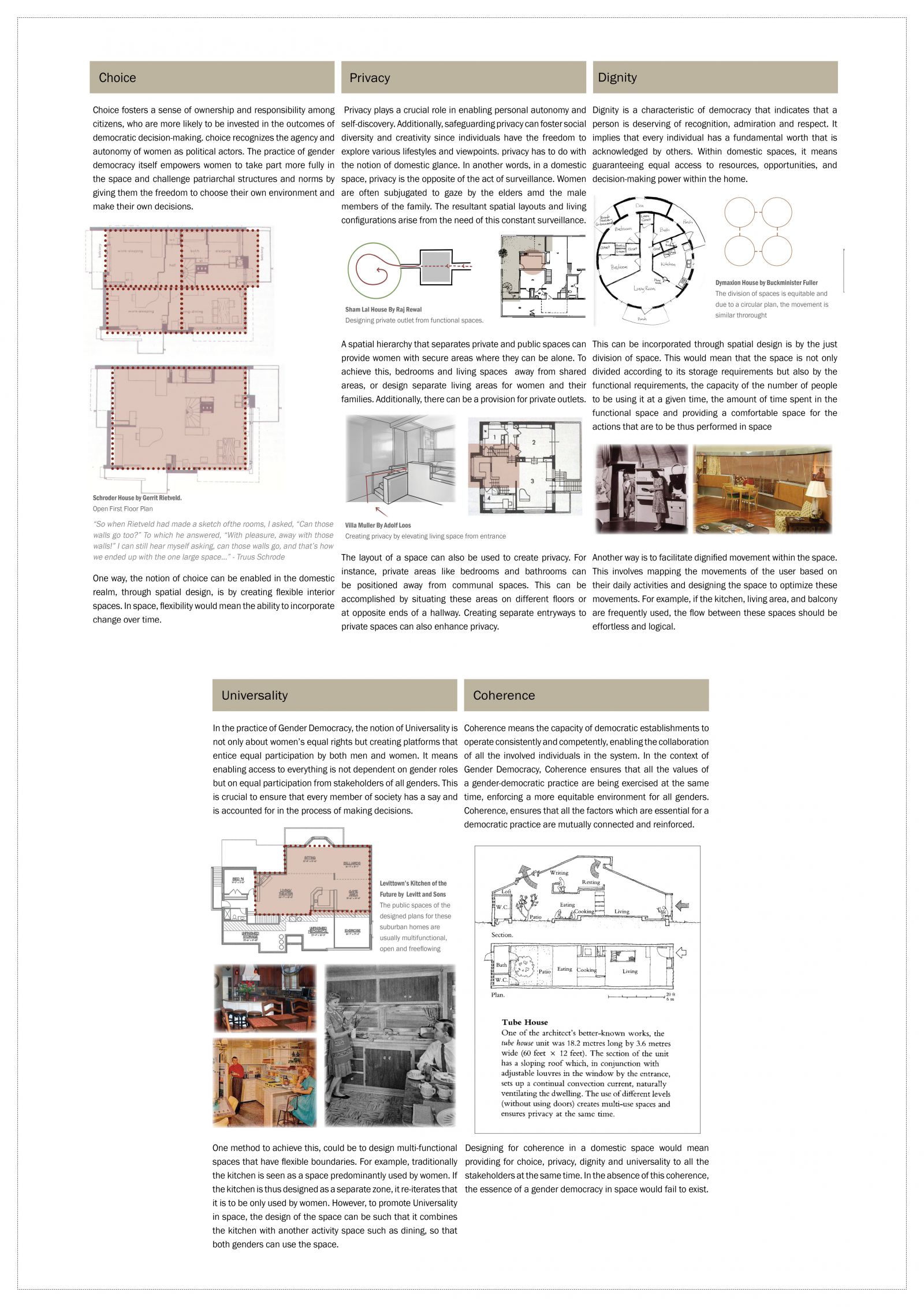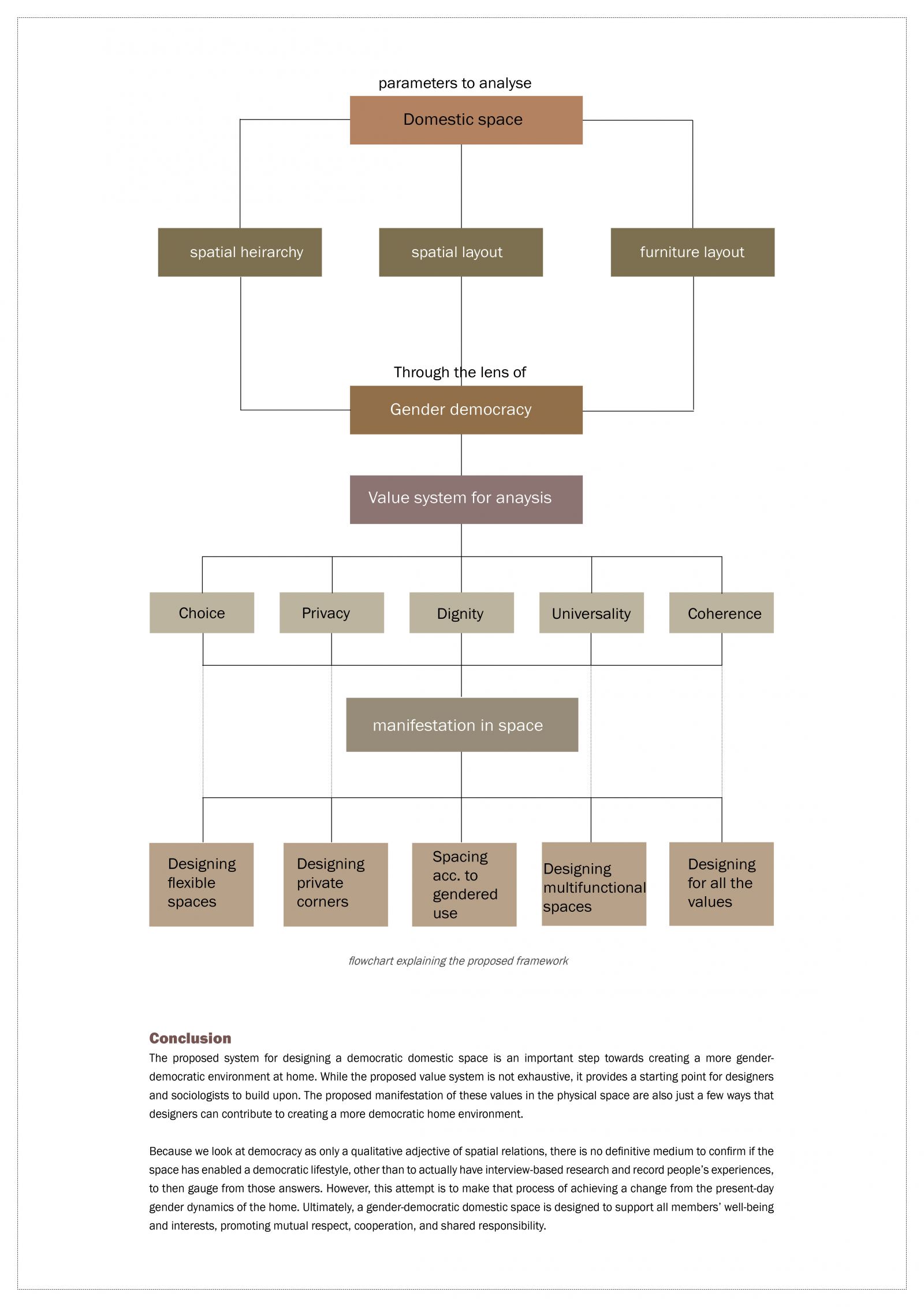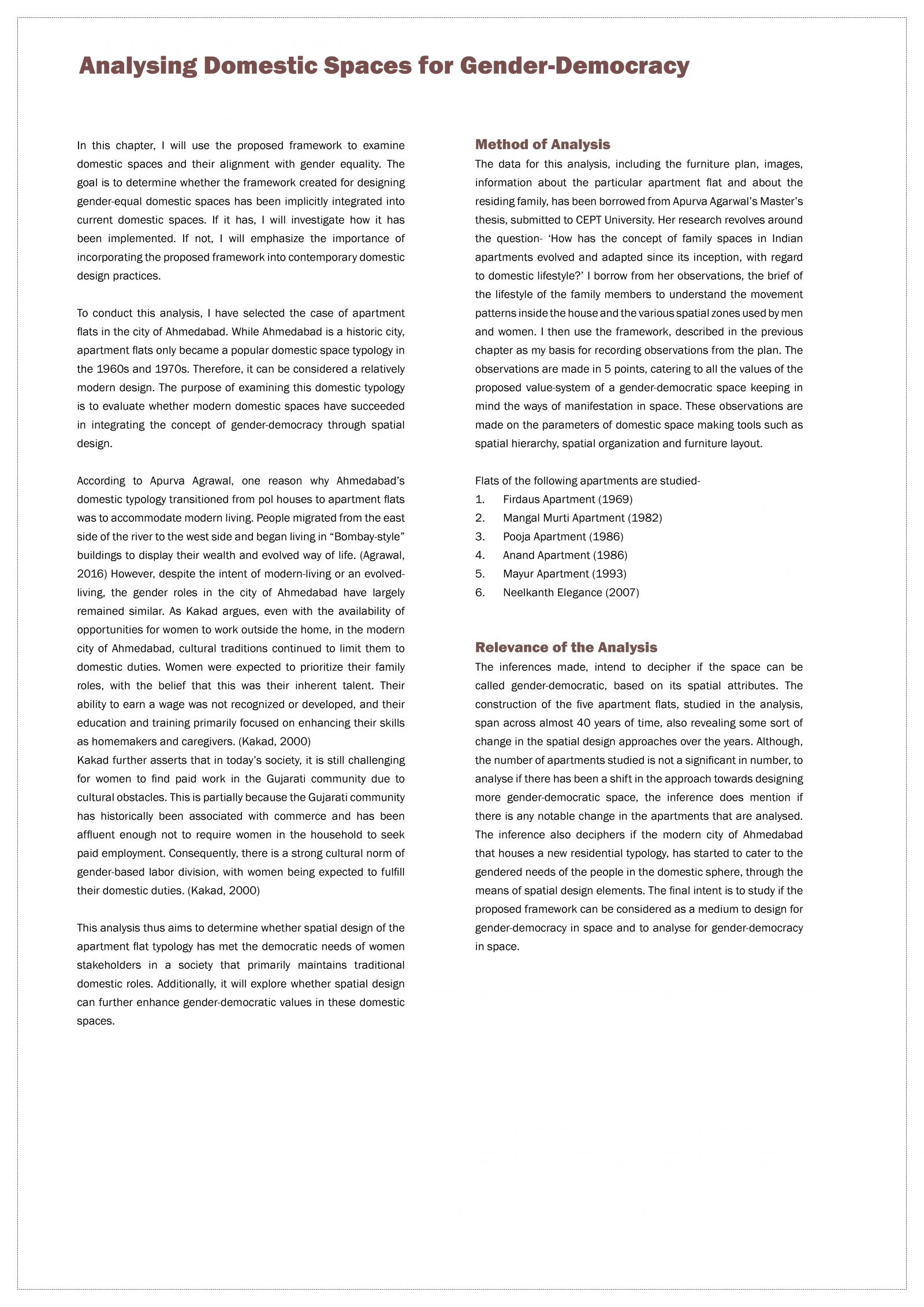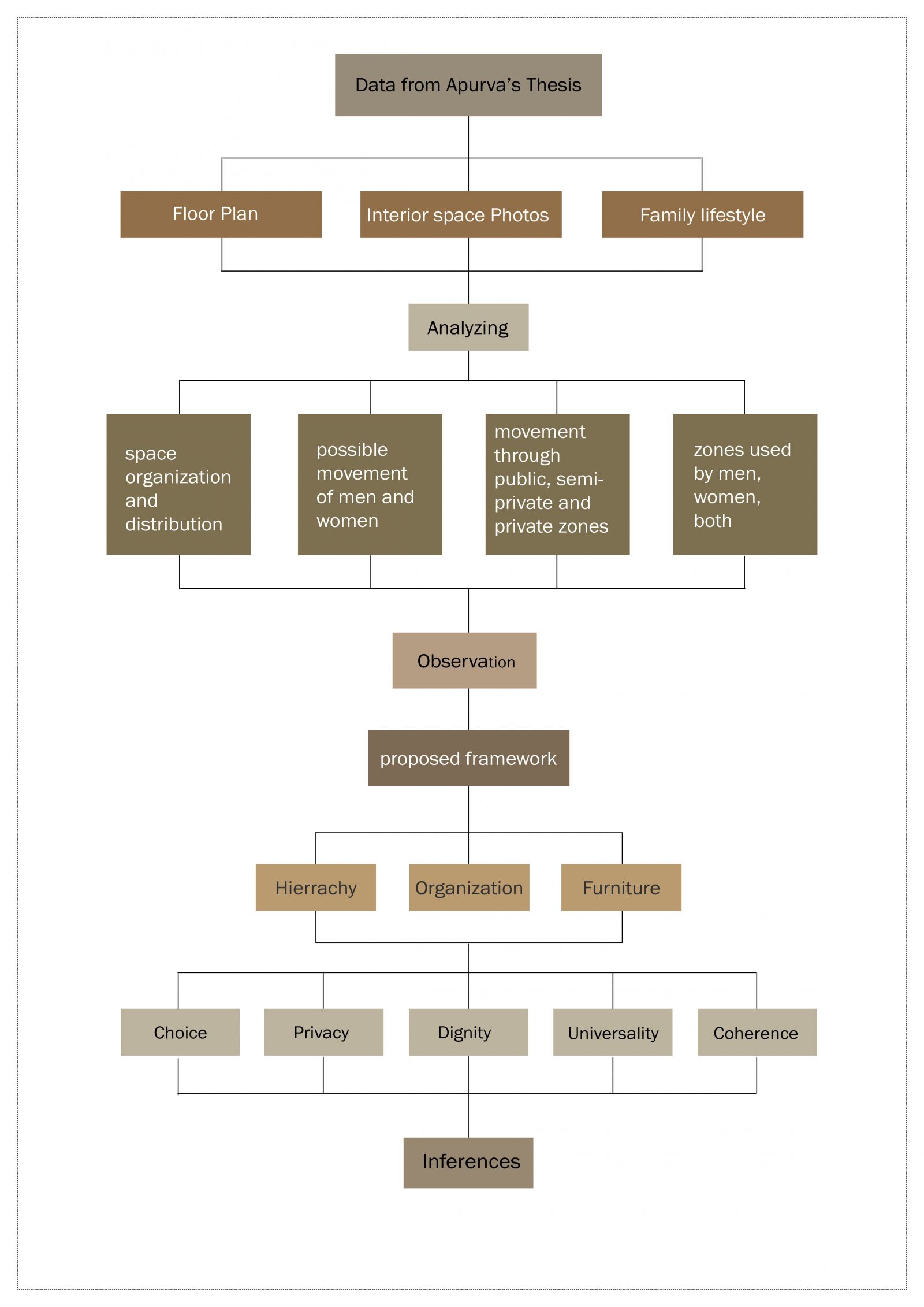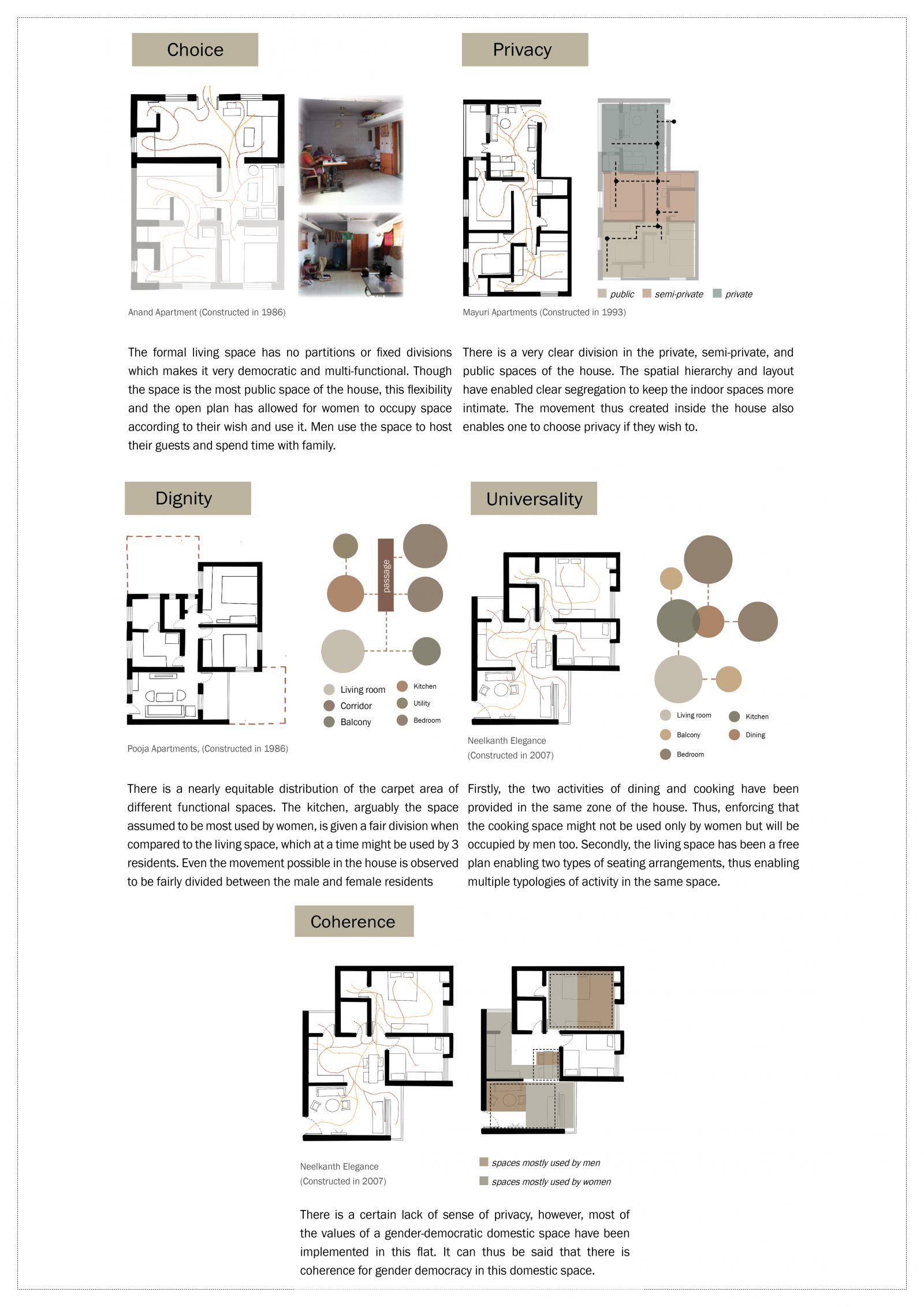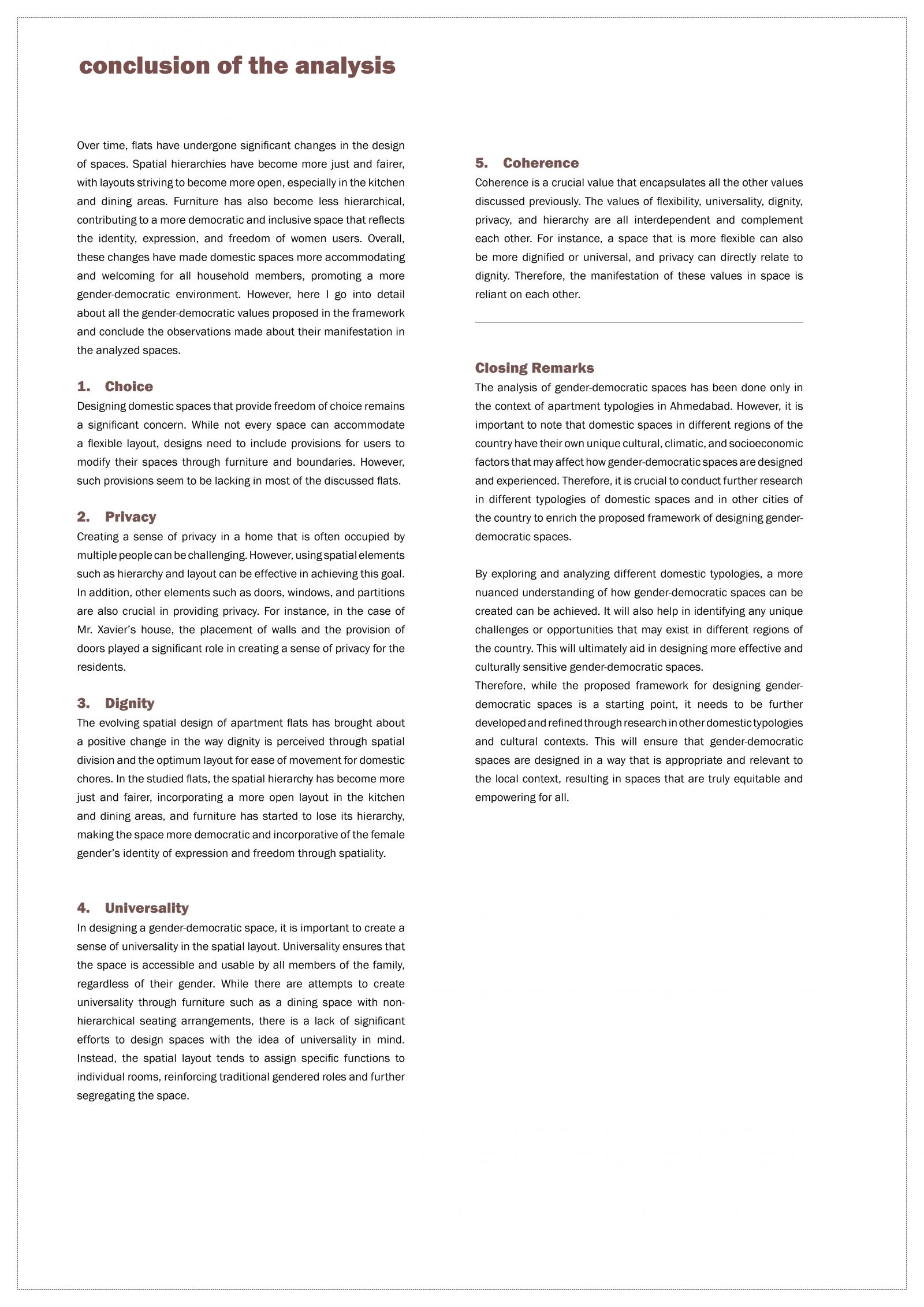Your browser is out-of-date!
For a richer surfing experience on our website, please update your browser. Update my browser now!
For a richer surfing experience on our website, please update your browser. Update my browser now!
Domestic spaces are not homogenous. They have an embedded sociological construct primarily based on the traditionally assumed roles of men and women stakeholders. According to these roles, women are the principal caretakers of the household and hence spend most of their time within the confines of their residences. Given that, do the residential spaces then provide for an equitable and dignified spatial authority to women?
Democracy is an intangible facet of well-being. In interior space, it aims to propose an equal and just environment for all its stakeholders. Mapping movements of men and women in domestic space and using literature review, this research analyses the notion of gender-democracy in domestic space and maintains that spatial design has the ability to facilitate a democratic environment and to thus cater to the well-being of the users. It proposes a framework for designing gender-democratic spaces. To extend the research in the Indian context, it analyses gender democracy in residential flats of Ahmedabad and the methods in which the proposed values of gender democracy have been implicitly integrated in spaces.
The research shows that certain aspects of spatiality have been able to incorporate the notion of gender democracy in space, but there is still a long way to go. Overall, this research highlights the importance of gender democracy in domestic spaces and offers a starting point for future research in the Indian context
The research document can be viewed here.
